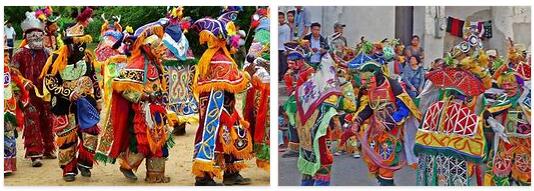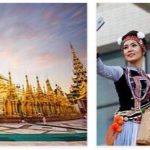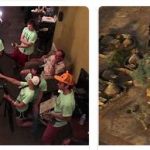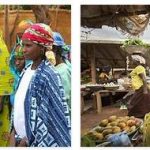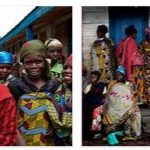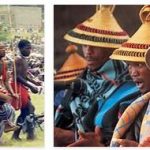TERRITORY: ENVIRONMENT
The vegetation cover of the country is very varied, according to the altitude and rainfall. In the wettest tierras calientes and along the river courses there are evergreen forests, tall trees, of an equatorial environment, which welcome beautiful plants such as ceiba and mahogany, and a very rich undergrowth of epiphytes; elsewhere, in the less humid areas, the forest becomes sparser and hosts tropical species that are affected by the double season: among other things there are sapodilla (from which chicle is obtained and which is widespread in Petén), chinchona (from quinine is extracted), the bread tree etc. In the less rainy areas of the highlands or closed basins there are associations that recall the chaparral, low, bushy, with xerophilous species on often lateritic soils. On the reliefs over 1500 m there are forests of oaks and conifers; the latter around 3000-3200 m give way to the grassy and shrubby vegetation of the puna. Overall, the forest areas cover 36.3% of the national territory but the deforestation works have considerably reduced the largest original woodland complex, causing, among other things, an impoverishment of the soil. The fauna includes a large variety of land mammals – including jaguar, puma, armadillo, coati, tamandua and other anteaters, sloths, squirrels, deer, monkeys, various bats, possums, ocelots – and water, such as the manate; fish, including some species of cichlids; amphibians and reptiles, such as caiman, various turtles and snakes; birds (quetzal, heron, stork, macaw, turkey). The Guatemalan Council for Protected Areas is in charge of the promotion and conservation of the national natural heritage and the direct management of the system of protected areas, which includes 12 national parks and numerous other sites that cover 29.8% of the country’s surface. The UNESCO program for biosphere reserves, it has identified and included in its biodiversity conservation and sustainable development project two locations: in 1990, the Maya reserve, an area of over 2 million hectares located in the north-eastern sector of the country, on the border with Mexico and Belize, which includes the Tikal National Park and the Laguna del Tigre National Park, one of the seven wetlands of Guatemalan international interest in the Ramsar Plan; in 1992, the Sierra de las Minas reserve, a park of 236,000 hectares covered with humid tropical forest and pre-mountain and subtropical forest.
CULTURE: GENERAL INFORMATION
According to thesciencetutor, a few kilometers away in Guatemala completely different lifestyles and traditions coexist. On the one hand, the Mayan villages, with the rhythms and ceremonials inherited from the civilizations that settled here centuries ago; on the other, the noisy and consumerist Western model of cities. In reality it is not a question of a real dichotomy but rather of two extremes, in the midst of which the multifaceted forms in which the Guatemalan culture appears, which has changed over time due to contacts with missionaries, the conquistadors., the deported slaves, the US multinationals. The capital is a perfect synthesis of the contradictions and the different souls of the country; among the most interesting institutions are the Museo Nacional de Arqueología y Etnología, dedicated to Mayan art, and the Museo Nacional de Arte Moderno, which houses 20th-century Guatemalan art. Markets, huge squares and colonial buildings complete the picture of a classically “Central American” metropolis. The ancient capital of the country, Antigua, about 50 kilometers from the current one, has been part of the UNESCO World Heritage Site since 1979, together with the Tikal National Park (1979, natural and cultural site) and the Archaeological Park with the ruins of Quiriguá (1981).
CULTURE: ART
In the region where the Mayan culture flourished, which left splendid artistic testimonies, three main areas can be distinguished: the Basse Terre, the High Lands and the Pacific Plain. In the Basse Terre (plains of the Petén and the lower course of the Motagua river) there are numerous ceremonial centers, which were abandoned in the century. X d. C., and there are the highest pyramids of the Mayan area, unfortunately almost completely submerged by the forest. The palaces have the rooms covered by a false vault with projecting ashlars; the stelae are very important, dated and admirably carved. The most important centers are Tikal, Uaxactún, Piedras Negras, Naranjo and Holmul in Petén, Quiriguá on the lower Motagua. In the Alte Terre the architecture is more sober: the pyramids are less high and the cities are fortified centers with strategic platforms. Monumental sculpture is almost completely absent and for the most part there are sculptures in the round and censers. Noteworthy are the vases decorated with glyphs from San Agustín Acasaguastlan and the “leaded” ones from Tajumulco. Among the most important centers, Kaminaljuyu, Utatlan, Mixco Viejo, Zaculeu and Nebaj. The Pacific Plain was an area of transit and cultural exchange between Mexican and Mayan peoples. The most impressive artistic manifestation is given by sculpture: the steles of the region of Santa Lucia Cozumalhuapa, El Baul and Bilbao, attributed to the pipil, an extinct Nahuatl tribe. To remember the stone axes in the form of flattened heads and the stone games, which recall the similar sculptures of the totonacs of Vera Cruz. The figurative arts began to evolve after the Spanish conquest, initially binding, as for music and literature, to sacred themes. Along a “classic” path for Latin American countries, painting and sculpture have gone through the phases of modernism, of the strong influence of the European avant- gardes, of the rediscovery of origins through primitivism and the naive, to arrive at nationalist art and then at the contemporaneity of the new means of communication and the generations of the third millennium. Along this route the most important names were Carlos Mérida (1891-1984), a friend of Diego Rivera and considered the greatest Guatemalan painter, Roberto Cabrera (b.1939), intellectual heir of Mérida together with Elmar Rojas and Marco A. Quiroa (members of the Vertebra group), Roberto González Goyri (1924-2007), Efraín Recinos (b. 1932), Regina J. Galindo (b. 1974), whose provocative installations and performances arouse controversy and debate.
CULTURE: CINEMA
Only one parenthesis of national film production occurred to coincide with the presidency of Arbenz Guzmán, when El sombrerón (1951), La carribena (1952) and El alba (1953) were produced. Filmed by M. Mora, the latter narrated, with a lyricism not unworthy of the novels of MA Asturias, the persecution of the Indians at the hands of European settlers towards the end of the nineteenth century. After the military restoration of 1954, the market was again flooded with US or Mexican films. The end of the twentieth century and the early 2000s brought new light to Guatemalan cinema, which was also represented abroad by directors and valuable films. Among others Carlos García Agraz (Donde acaban los caminos, 2004), Florence Jaguey, Julio Hernandez Cordon (Gasolina, 2007), Luis Argueta (El Silencio de Neto, 1994).
